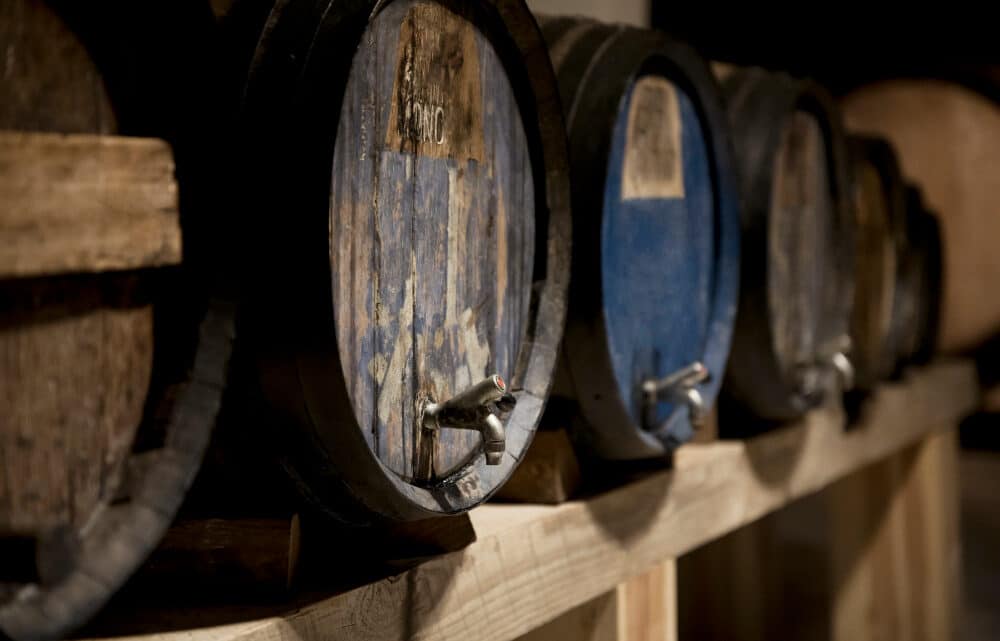The Impact of the Barrel: How Wood Transforms the Flavour of Rum

Since the beginning of rum production, barrels have been crucial tools that have significantly influenced the final characteristics of this iconic beverage.
My goal is to provide readers with an enriching insight into the influence of barrels on the history and taste of rum. Importantly, this research is based on my experience and expertise in the international rum industry, and I am committed to ensuring its accuracy and authenticity. I am willing to address any concerns in a transparent and professional manner.
The Influence of Wood on Rum Aging
Food and Beverage Management Consultant and rum industry expert Omar J. Hoyer reveals in his blog how the porosity of the oak staves in rum barrels triggers a fascinating process. Air penetrates the wood, interacting with the alcohol and generating aldehydes that transform into acids. Over time, these acids combine with the oxygen in the alcohol, producing esters that give the rum its unique fruity aromas and flavors. This oxidation process evolves as the rum ages, incorporating tannins from the wood.
Rum aging also involves the extraction of components from the oak wood, which interact with the alcohols, contributing to the color, aroma and flavor. Day-night thermal variations in tropical rum regions play a crucial role in this process.
American white oak barrels, previously used for bourbon whiskey, are the most common in the rum industry due to economic reasons. However, French oak and other woods are also used for premium rums.
The key components of oak wood that affect rum are cellulose, hemicellulose, lignin, tannins and stave burn, each contributing unique characteristics to the rum in its aging process.
Brief history of the use of barrels in rum production
Barrels have been an integral part of the rum industry since its inception. In the past, barrels were mainly used for reasons of practicality and transport. However, over time, master rum makers began to notice that the storage period in these wooden containers contributed significantly to improving and softening the taste of rum.
Purpose of Rum Maturation in Wooden Barrels
The main goal of ripening rum in wooden barrels is to enrich its flavor and aroma profile. The wood in the barrel interacts with the rum, imparting different notes and characteristics, depending on the type of wood, its origin, and previous contents. This process allows the rum to develop a more complex and multifaceted bouquet, improving its quality and appreciation among consumers and connoisseurs of this distillate.
Types of Wood and its Characteristics
Different types of wood used in barrels
There are several types of wood that are commonly used in the manufacture of barrels for the maturation of rum, each contributing unique characteristics to the final product:
American Oak: It is a popular choice due to its availability and the soft and sweet qualities it imparts to rum. He is known for adding notes of vanilla, coconut, and candy.
European Oak: This type of wood is dense and has smaller pores, contributing to a slower maturation process and offering more robust and spicy flavours.
Cherry and Maple: Other types of wood such as cherry and maple are also used occasionally, and tend to impart fruity notes and a milder flavor profile.
How each type of wood affects the taste and aroma of rum
The choice of wood is crucial, as each type of wood interacts differently with rum:
Influence on the taster: Wood can contribute with various compounds, including tannins and lignins, which affect the sweetness, bitterness and fruity notes of rum.
Influence on the aroma: The different types of wood can also add unique aromas, from floral to earthy, which are mixed with the natural aromas of rum to create a more complex and attractive bouquet.
The Maturation Process
Description of rum maturation process in barrels
The process of maturing rum in barrels is a crucial phase that contributes significantly to its flavor and aroma profile. During this period, the rum stored in the wooden barrels continuously interacts with the wood, absorbing its natural compounds and acquiring complexity and softness. In addition, rum also undergoes chemical and physical changes that allow it to evolve, perfecting its character and quality.
Factors influencing ripening, such as temperature and humidity
Temperature: A constant and adequate temperature is essential for a good maturation process. Higher temperatures can accelerate ripening, but can also lead to increased evaporation of rum.
Humidity: A controlled relative humidity is necessary to maintain the proper balance of water and alcohol in the rum. Extreme humidities, whether very high or low, can negatively affect the final result.
Location of the barrel: The position of the barrel within the cellar can also influence, as different areas may have microclimatic variations that affect maturation.
Maturation time: The period that the rum spends in the barrel is also decisive, allowing the rum to acquire more characteristics of the wood over time.
Chemical Changes in Rum
Interaction between rum and wood during maturation
During maturation, the rum in the barrels undergoes a series of significant chemical transformations. These changes are the result of the interaction between the rum and the wood in the barrel. The alcohol and other compounds in rum react with the wood components, resulting in the creation of new compounds that contribute to the final aroma and flavor of rum.
Influence of wood compounds on the taste profile of rum
The compounds present in wood, such as tannins and lignin, play a crucial role in the development of rum’s flavor and aroma profile. For example, vanillin derived from lignin in wood contributes vanilla notes to rum. In addition, wood tannins can impart astringency and complexity characteristics to rum’s flavor profile. These compounds, along with other elements of the wood, work together during the maturation process to create a rum with a unique and complex flavor and aroma profile.
Barrel Selection Considerations
How to choose a barrel suitable for different types of rum
Type of Wood: The type of wood in the barrel influences the final taste of the rum. Oak barrels, especially American oak barrels, are commonly used and bring distinctive flavors and aromas to rum.
Barrel Size: Barrel size can influence the aging rate of rum. Smaller barrels allow a greater interaction between rum and wood, thus affecting its final taste and aroma.
The Importance of Barrel Condition and History
Condition of the Barrel: It is essential to ensure that the barrel is in good condition to maintain the integrity of the rum during the aging process.
Barrel History: Barrels that have previously contained other liquids, such as bourbon, can impart additional flavors and aromas to rum, enriching its flavor profile.
Choosing the right barrel, considering these aspects, is crucial to developing the desired flavour and aroma profile in rum.
Conclusion
Careful choice of wood and barrel is critical in determining the quality, taste and aroma of rum. Different types of wood, especially American oak, play a crucial role, imparting unique characteristics to rum during the aging process. In addition, barrel size and condition are essential factors that also directly impact the final profile of the rum, with smaller barrels speeding up the maturation process due to increased interaction between rum and wood.
The maturation process is an art in itself, vital for enhancing and embellishing the intrinsic qualities of rum. It is a period where rum is transformed, absorbing the richness and essence of the wood, resulting in a refined and well-balanced spirit. This meticulous process underscores the importance of informed and thoughtful barrel selection, ensuring that every drop of rum encapsulates the desired perfection.
As a rum industry insider, do you have any suggestions about this article? Feel free to let me know your comments and suggestions: camilo@empresasfh.com.
Sources
- Omar J Hoyer Blog
- Centur Cava
- Northeastbarrelcompany.com
- Urbanbarrelcompany.com
- Blacktot.com
- excellencerhum.com
Featured image: Freepik
About The Author
Camilo is an audiovisual communicator with over 15 years of experience. He resides in Caracas, Venezuela, and has studied film and television, acquiring skills in writing film scripts. He currently works as a Digital Content Manager at TRL. If you would like to see his portfolio, you can visit his website at http://ccesarino.com.













